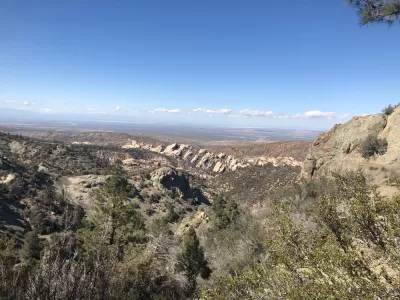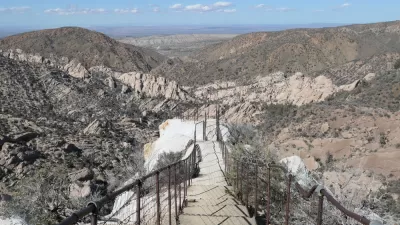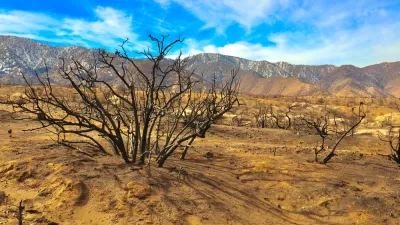Los Angeles County is seeking public input as part of the Devil’s Punchbowl Natural Area Nature Center replacement planning project.

Operated by the Los Angeles County Department of Parks and Recreation (DPR), the Devil’s Punchbowl Natural Area is a regional, national, and international destination for hikers, naturalists, and schools. It is a unique 1,310-acre geological wonder where visitors can walk, hike, or take a horseback ride on a 7.5-mile trail. Visitors can see spectacular up-tilted rock formations created by layers of sedimentary rocks and also explore a landscape of Joshua trees, California Junipers, and Pinyon Pine Woodland while observing the variety of wildlife. The Nature Center was remodeled in 1988 to serve as a critical educational resource to teach visitors about the sensitive habitat, local flora and fauna, and safety in the harsh extremes of the desert.
On September 6, 2020, the Bobcat Fire destroyed over 30,000 acres of land, which included many parts of the Devil’s Punchbowl Natural Area, including the Nature Center, a small, roughly 1,000-square-foot wooden structure. As reported in this article by Julie Drake of the Antelope Valley Press, DPR has started the process to plan for the replacement of the Nature Center and is holding community workshops to gather public input. This planning project will perform the necessary environmental planning and conceptual design work to create a viable, appropriately-sized, and programmed project to replace the previous Nature Center and other related improvements that were destroyed in the Bobcat Fire. The new Nature Center building will address various site constraints, including the limited supply of fresh water, lack of sewer or wastewater system, and limited capacity of the existing parking lot and entry road.
FULL STORY: Community workshops planned

Trump Administration Could Effectively End Housing Voucher Program
Federal officials are eyeing major cuts to the Section 8 program that helps millions of low-income households pay rent.

Planetizen Federal Action Tracker
A weekly monitor of how Trump’s orders and actions are impacting planners and planning in America.

Ken Jennings Launches Transit Web Series
The Jeopardy champ wants you to ride public transit.

Crime Continues to Drop on Philly, San Francisco Transit Systems
SEPTA and BART both saw significant declines in violent crime in the first quarter of 2025.

How South LA Green Spaces Power Community Health and Hope
Green spaces like South L.A. Wetlands Park are helping South Los Angeles residents promote healthy lifestyles, build community, and advocate for improvements that reflect local needs in historically underserved neighborhoods.

Sacramento Plans ‘Quick-Build’ Road Safety Projects
The city wants to accelerate small-scale safety improvements that use low-cost equipment to make an impact at dangerous intersections.
Urban Design for Planners 1: Software Tools
This six-course series explores essential urban design concepts using open source software and equips planners with the tools they need to participate fully in the urban design process.
Planning for Universal Design
Learn the tools for implementing Universal Design in planning regulations.
Heyer Gruel & Associates PA
Ada County Highway District
Institute for Housing and Urban Development Studies (IHS)
City of Grandview
Harvard GSD Executive Education
Toledo-Lucas County Plan Commissions
Salt Lake City
NYU Wagner Graduate School of Public Service





























